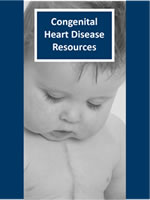Children and Youth with Special Health Needs (CYSHN)
Programs
Contact Info
Coarctation of the Aorta
Condition Description
Coarctation of the aorta is a congenital defect of the heart where the major vessel that carries blood away from the heart, the aorta, has a narrowed segment. This segment is called a “coarctation”, and it causes high blood pressure in the vessel that is in front of the narrowed area. The narrowed segment is typically found just beyond the part of the aorta where the vessels go to the left arm, heart and head. The result is there is higher pressure in the blood vessels of the left arm, heart and brain and lower pressure in the rest of the body. There is no known cause for coarctation of the aorta.
Coarctation of the aorta is a condition that may not be detected for many years if it involves a small segment of the aorta. Sometimes it is detected by finding an elevated blood pressure in the arms with lower blood pressure in the legs. There may be decreased or absent pulses in the legs as well. In about half of cases, this coarctation is severe enough that it is detected in the newborn period. In the rest of cases it is milder, and blood flows through the narrowed area in sufficient quantities to sustain growth and activity without noticeable symptoms.
Individuals who have had a coarctation of the aorta must be followed by a cardiologist for the rest of their lives because of the possibility of complications. Sometimes a surgical procedure has to be repeated if there is scarring that causes further narrowing of a segment of the aorta later in life. It will be important to have frequent blood pressure checks to be able to detect and promptly treat this condition.
Our program has been tracking coarctation of aorta among live births since 2005 and gradually expanding statewide.
- Using data from births to Hennepin and Ramsey county residents between 2014-2018, we found that 5.4 babies were born with coarctation of the aorta per 10,000 births.
- Using this data, we estimate about 36 babies are born with coarctation of aorta every year in Minnesota.
